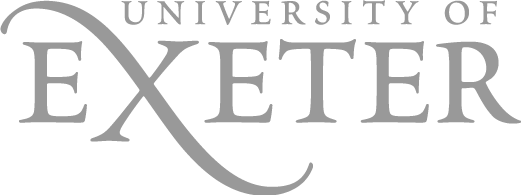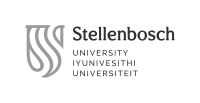S2401 History of Venice
Professors
Schedule
Course description
Various things make Venice a place of interest: the fact that it was built on waters and marshy lands; the way its inhabitants shaped the Lagoon and managed the environment; the relationship with Byzantium and the East; the way it became the capital of a merchant empire; its role as a center of the printing industry, art production and Humanism; its development into a city of pleasure; the sudden loss of independence; the 19th Century cultural myth of its death; its rebirth with the Risorgimento of Italy; the creation of a new urban order, from the industrial port of Marghera to the beach resort at the Lido; the great social transformation of the 1950’s-1970’s, which produced a crisis of Greater Venice; the development into a “theme-park”; the way the city still presents an alternative notion of urban space.
The course covers all of these themes through wide use of multimedia sources (images, videos, music), attempting to provide a broad introduction to ways to look at the history of this place. Its structure will not be chronological, but thematic. The main focus will be on the relationship between the environmental setting, morphology of the city, social life, political institutions. Students will be exposed to an idea of history as social construction.
The course will involve site visits (Ghetto, Ducal Palace, Mose and Industrial Port).
Students are expected to contribute to class, through two short oral presentations, which can take the form of either an article review or research report, and a final research paper, developing themes of personal interest, in agreement with the Professor. Topics can range from Literature to Economics, from Law to Cinema. Past themes have included: Venice and the Fourth Crusade, Venetian Courtesans, Marco Polo, The Bostonians in Venice, Contemporary Arts in Venice, Venice and Mass Tourism, Contemporary Environmental Policies. Students will also be asked to act as discussants after one of the presentations by their peers.
In the presentations, group work mixing nationalities will be encouraged. Research papers must include bibliographical references and notes.
Syllabus
PART ONE - THE URBAN FORM - A CITY BUILT ON WATER, MACHINE FOR LIVING (weeks 1-4)
1) Venice's global image, stereotypes and replicas; Venice as a machine for living; history of cisterns; city setting (brackish water and muds); 2) ancient legendary narratives of foundation (Attila and 421); 3) modern historiographic narratives (Maritime Venice, Rivo Altus, Lombards and Byzantines); 4) more recent environmental narratives (arm wrestle between rivers and sea, Eraclea and Metamaucum, invention of the Lagoon); 5) building the city (maps, toponyms, songs); 6) urban maintenance and preservation (including: the city as work of art in progress)
PART TWO - VENICE AND MODERNITY - A CITY WHICH LIVED VIOLENT INDUSTRIALIZATION AND EXTREME "POST-MODERN" PROCESSES (weeks 5-8)
1) industrialization, futurism and port Marghera; 2) greater Venice, de-industrialization, green tree strategy; 3) high tide of 1966 and the rediscovery of the Lagoon; 4) sustainable Venice, climate change and MoSE (the mobile dams to protect Venice from the rising sea level); 5) privatization and liberalization, "Veniceland", the tourist boom and its effects, residents' resistance; 6) international institutions (biennale etc.), opportunities of Venice as a cosmopolitan city, capital of handcrafts and contemporary art
PART THREE - HISTORICAL HERITAGE - A MERCHANT ARISTOCRATIC REPUBLIC (week 9-12)
1) rise of Venetian trade and power (726-1204 the complex relation with Byzantium, from the first acclaimed doge to the fourth crusade); 2) expansion (1204-1453 rivalry with Genoese and Ottomans in the Mediterranean, conquest of the Terraferma); 3) "decline" (1453-1797 myths and realities, end of expansion in Terraferma, Ottoman take overs in the Mediterranean, Venetian pacifist diplomacy, plagues, conservatism, end of the Republic of Venice); 4) political system, carnival in Ancient Venice; 5) welfare, Church State relations; 6) death and risorgimento of Venice (French, Austrian dominations, 1848 revolution)
Evaluation method
10% attendance and in-class participation
10% discussion of one of the oral presentations by peers
20% first oral presentation in class
20% second oral presentation in class
40% written final research paper
Useful General Texts
720.945311/GIA VEN Giorgio Gianighian and Paola Pavanini, Venice: the basics, Gambier Keller 2010 (80 pages) - introduction to urban Venice as a built environment by two Venetian architectural historians (Gianighian was professor of restoration at IUAV and at Shanghai Jiao Tong University and taught a course on UNESCO World Heritage Sites at VIU for several years).
945.31/ORT VEN Gherardo Ortalli and Giovanni Scarabello, A Short History of Venice, Pacini Editore 1999 (126 pages) -the best very brief and reliable chronological synthesis of Venice as a city-state and power, widely available, by two scholars of Ca' Foscari University.
945.31/FER VEN Joanne M. Ferraro, Venice. History of the Floating City, Cambridge University Press 2012 (214 pages) – more recent overview of the History of Venice as a city and a state, assuming postmodern approaches: the construction and evolution of identities; the multiculturalism of material life; social hierarchy; and gender as a cultural construction - by an American Historian.
945.31/CRO VEN Elisabeth Crouzet Pavan, Venice Triumphant: the Horizons of a Myth, The Johns Hopkins University Press 2005 - top French scholar on Medieval Venice deconstructs myths and tells the history of the city and the Republic before 1797, paying attention also to urban daily life and the relationship with water: excellent book.
945.31/LAN VEN Frederic Lane, Venice. A Maritime republic, The Johns Hopkins University Press 1973 - the classic textbook on the History of Venice, which keeps being reprinted. Lane has been the most outstanding US economic and social historian on Venice (esp. Renaissance): very reliable and clear.
945.31/PLA VEN Margaret Plant, Venice. Fragile City 1797-1997, Yale University Press 2003 (424 pages) - this illustrated book encompasses politics, culture and architecture of the city after the fall of the Republic, using also Italian scholarly research. The author is Professor Emeritus in Art History in Melbourne, Australia.
945.31/BOS VEN Richard Bosworth, Italian Venice. A History, Yale University Press, New Haven and London 2014 (329 pages) - the history of Venice from the annexation to the present, told by an Australian political historian (famous for his works on Italian Fascism) from the University of Oxford. A more recent book, which roots narrative in visible elements of the urban environment (monuments, buildings, places), aware of Italian Historiographical works.
Piero Bevilacqua, Venice and the Water: A Model for Our Planet, Polar Bear & Co. 2009 (126 pages) – a quick overview of the environmental practices in the history of the city, which anticipated contemporary “sustainability” and are assumed by the author as positive examples to address today’s global challenges. Bevilacqua is an Italian Social and Environmental Historian.
We Are Here Venice (WAHV), Whose City is it Anyway?, WAHV 2020 (43 pages). Rigorous analysis of the present situation of Venice in terms of Housing, Employment and Services under the pressure of over tourism. WAHV is a Third Sector Organisation (TSO), dedicated to the conservation of Venice as a living city, founded in 2015. The text is available online at https://www.weareherevenice.org/wp-content/uploads/2020/07/Whose-city-is-it-anyway_digital_en.pdf
Last updated: January 23, 2024


















